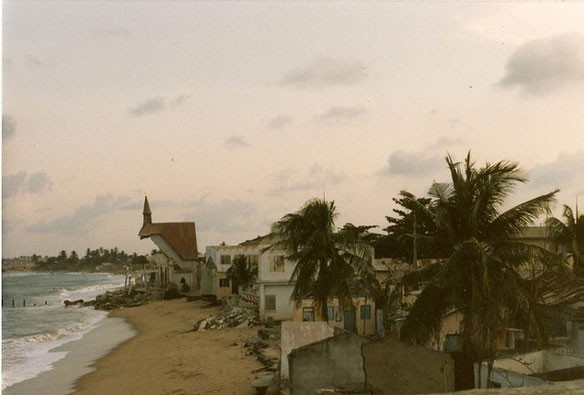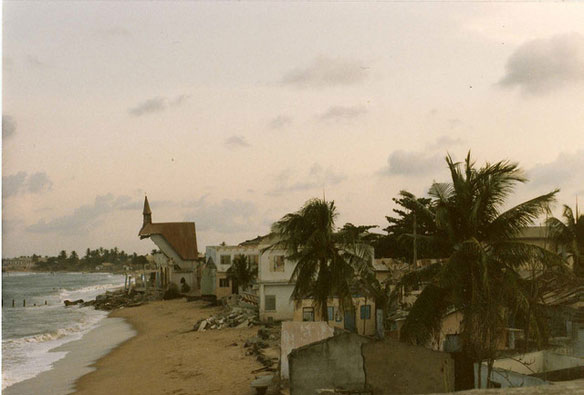
Severe coastal erosion, Keta, Ghana.
Ghana is undergoing much erosion. Keta is part of the Volta Delta Region, some think the Volta dam prevents silt for depositing and leads to greater erosion. Captions and Photo source: ©© Beth Knittle
Excerpts;
Sandy beaches are habitat to many invertebrate biodiversity and threatened vertebrate species. However, extraction of sand is widespread along many developing nations’ beaches destroying the ecosystem services the area provides. This study assessed the ecological impacts of beach sand mining on three beaches in the Central Region of Ghana over a four month period, using ghost crabs as a biological indicator. Beaches were categorized as near-pristine, moderately disturbed and highly disturbed.
Beach sand mining was found to negatively affect ghost crab populations indicating a critical need for local municipal authorities to identify more sustainable and less damaging sources of sand for the construction industry…
Read Full Article, Science Direct
Sand mining: The Greatest Threat To The Coastline of Ghana, Graphic Online (04-24-2014)
Ghana’s Ongoing Battle Against Coastal erosion (09-09-2011)
According to estimates, the ocean claims 1.5 to 2 metres of the 539- kilometres Ghana coastline annually; with the most risky coastal areas, Ada Foah and the Eastern parts of Keta, recording 4 metres. Ghana’s Government decided on a costly and controversial project: the building of a 68 million euros, 30 kms “Ada Defense Sea Wall” to “salvage the people in the area from the ravages of the sea…”
A Photo Gallery: “We Were Once Three Miles From the Sea” (01-03-2014)
Grain by grain, West Africa’s coasts are eroding away, the dry land sucked under the water by a destructive mix of natural erosion and human meddling… Nyani Quarmyne has poignantly photographed the impacts of climate change on people living on the Ghana coast…









